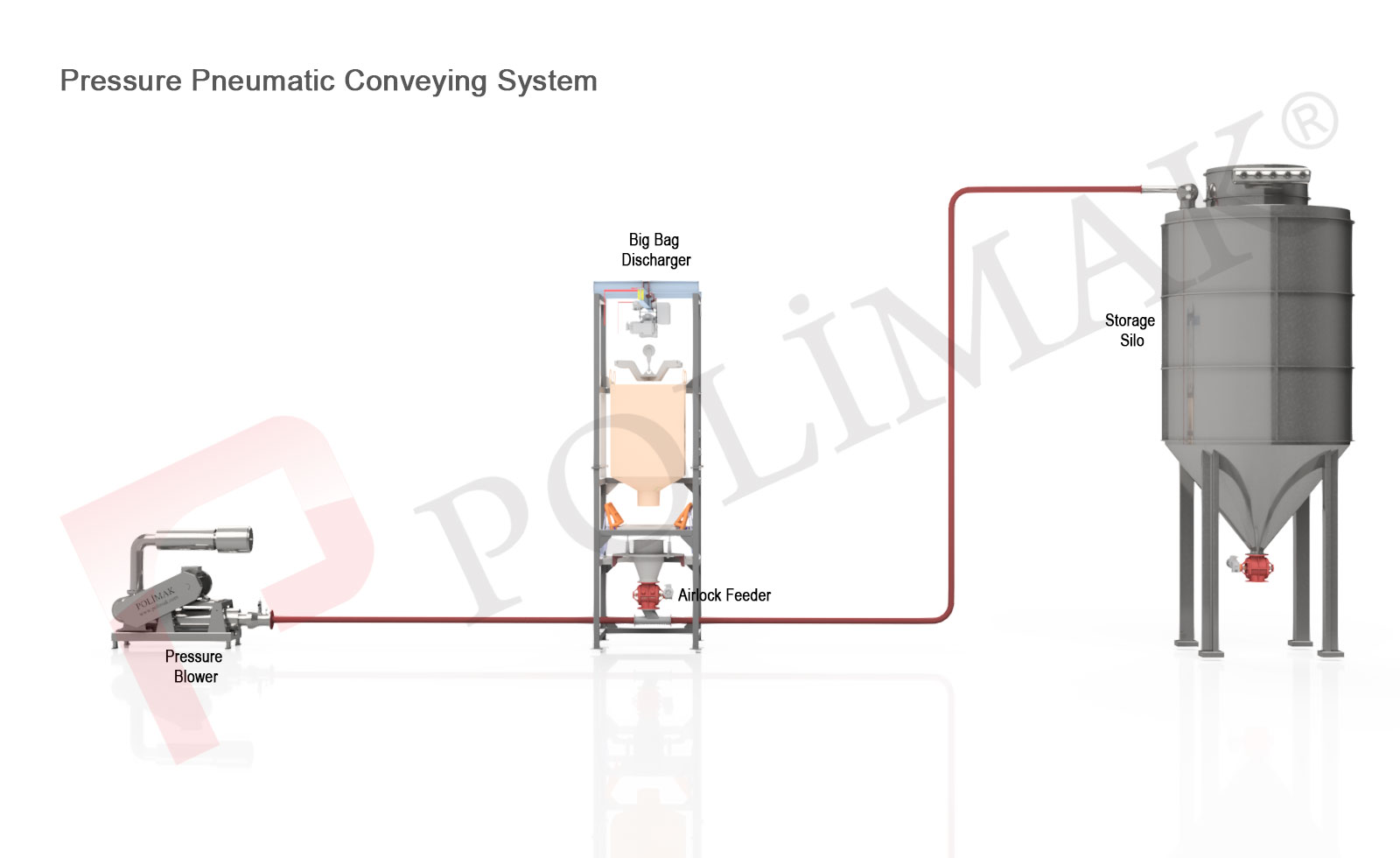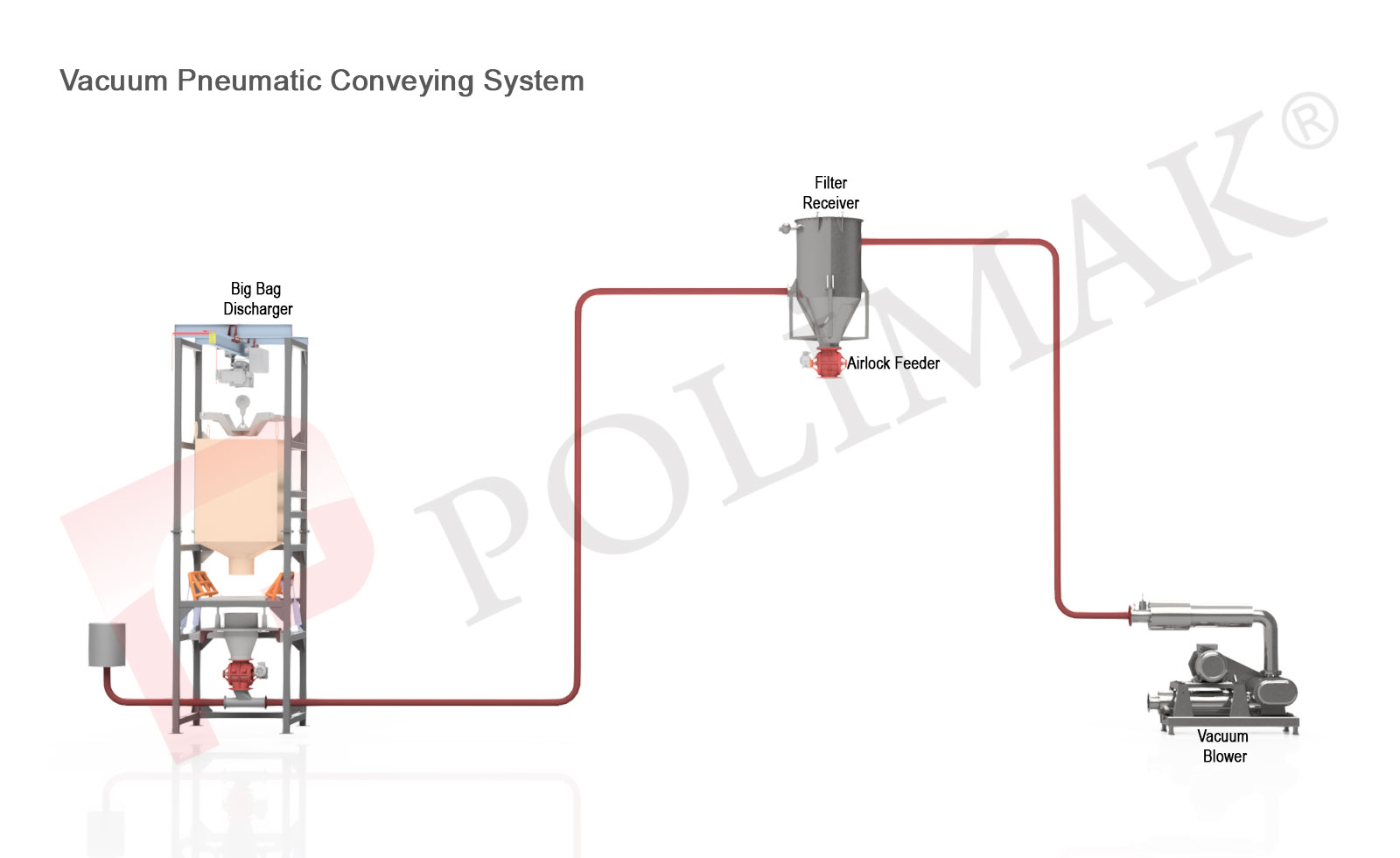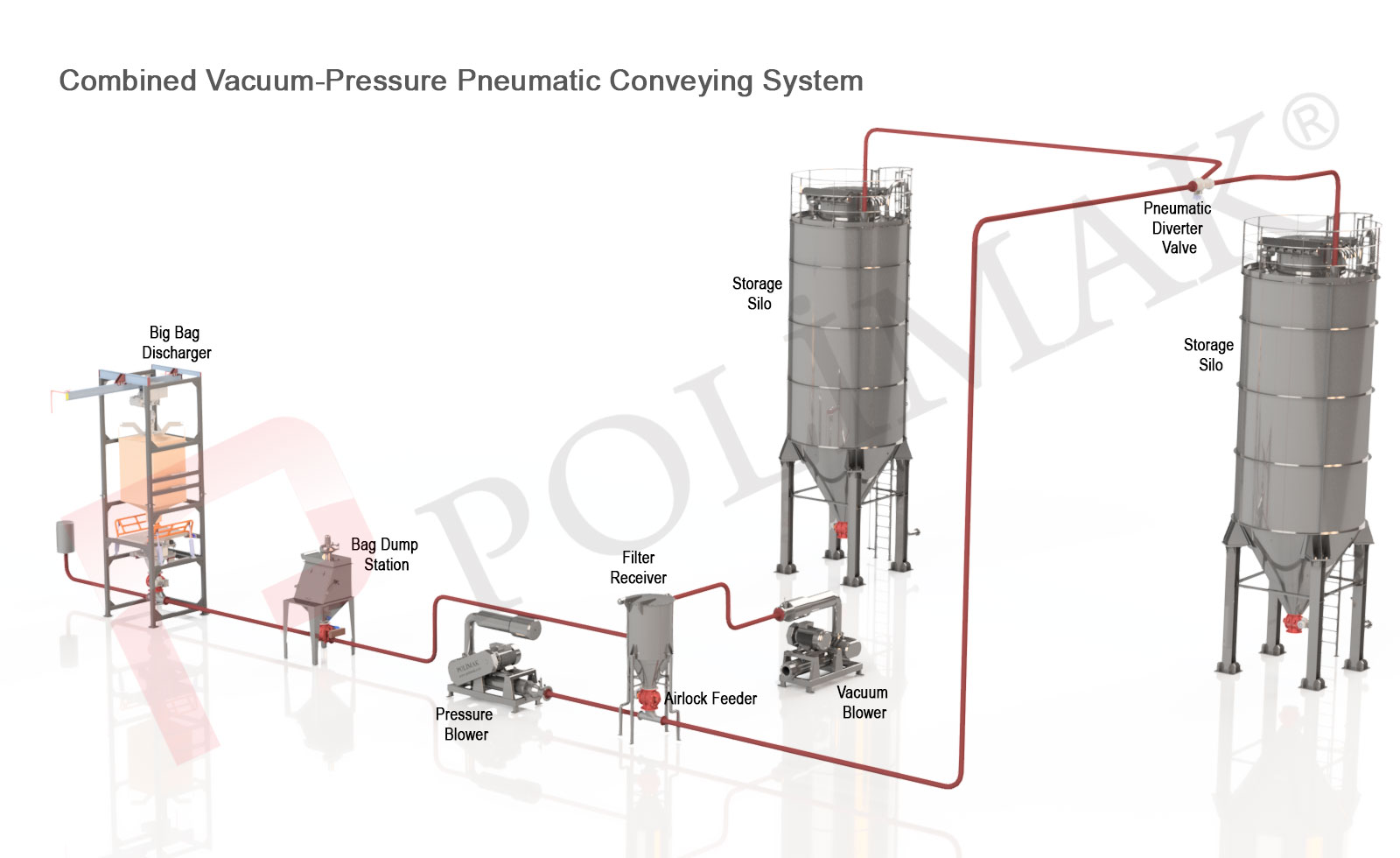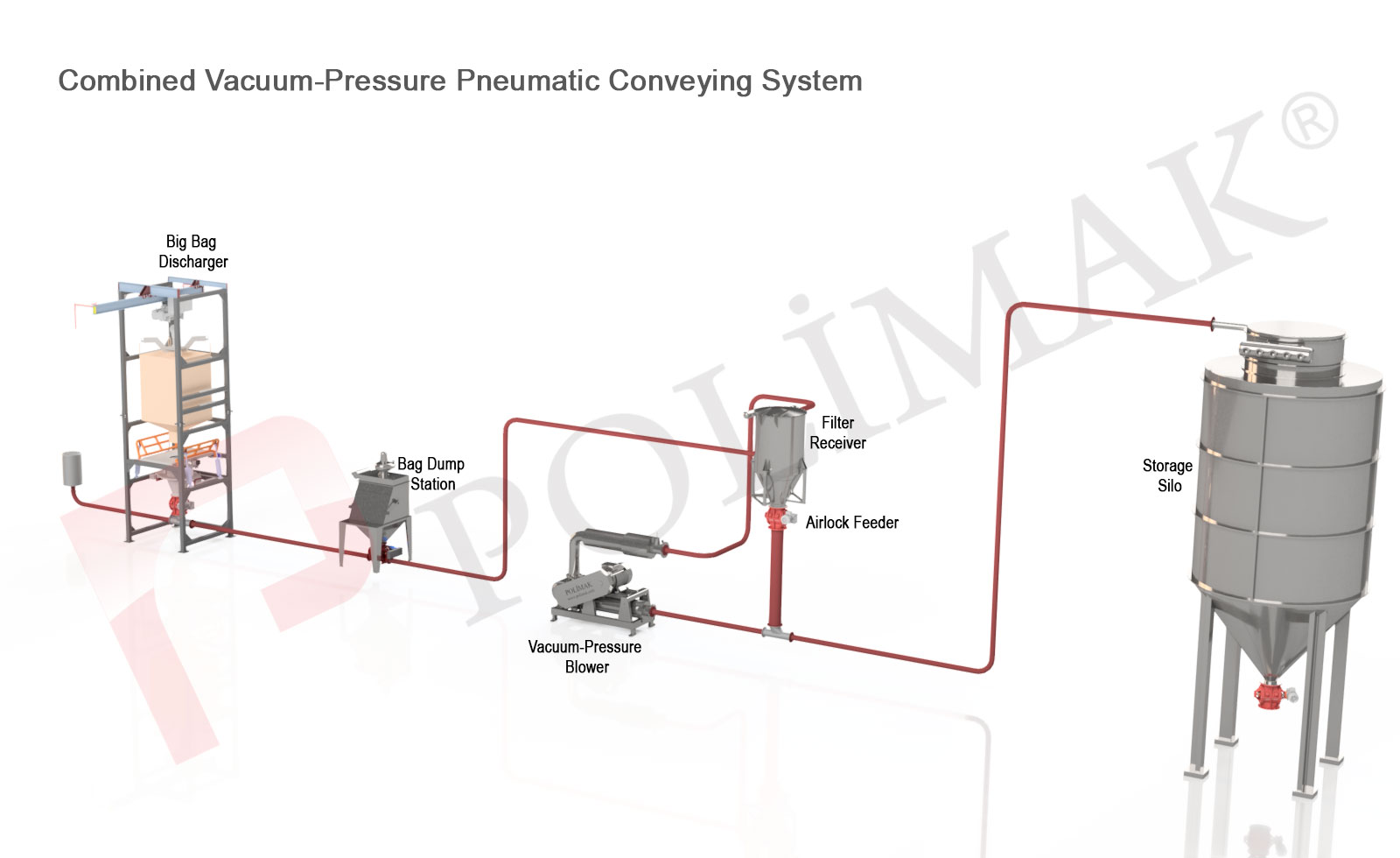Dilute phase conveying systems can be designed in three distinct ways; (i) positive pressure systems, (ii) negative pressure systems, also known as vacuum conveying systems, and (iii) combined negative and positive pressure systems.
Positive Pressure Systems
Dilute phase positive pressure systems are those that operate at air pressures above atmospheric pressure. Positive pressure systems are used to transfer bulk materials in an enclosed conveying pipeline from a single source or multiple sources to one or more destinations. These systems will typically consist of positive displacement blower(s) – roots type, conveying pipeline(s), rotary airlock valve(s), source(s) – product delivery equipment, and destination(s) – product receiving equipment.
Bulk materials are introduced to a conveying pipeline, which is at a higher pressure, using a feeding device such as a rotary airlock feeder. When delivered to the pipeline, bulk materials flow at relatively high velocities and are frequently suspended in an air stream inside the pipeline. At the terminal point, the air-material stream is separated using a filter receiver or a cyclone. The bulk material settles in the receiver and is ready to be discharged.
Dilute phase positive pressure systems are suitable for conveying dry bulk materials at low to moderate capacities over medium lengths from individual or multiple sources to one or more destinations. Some of the bulk materials that can be successfully conveyed by this method include cement, fly ash, dry chemicals, resins, flour, starch etc.

Negative Pressure Systems
Dilute phase conveying systems that operate below atmospheric pressure are known as negative pressure systems, also popularly referred to as vacuum conveying systems. These systems are generally used to transfer bulk materials from a single source or multiple sources such as trucks, rail cars (railway wagons), stockpiles, storage vessels etc., to an individual or multiple destinations. Dilute phase vacuum systems typically use positive displacement exhausters (roots type) to transport bulk materials via a conveying pipeline.
The product is delivered to the conveying pipeline using a feeder e.g., an airlock feeder then conveyed through a pipeline to a destination. Similar to positive pressure systems, the bulk material is suspended in an airstream during conveyance. The air and the material are separated at a receiving vessel with a cyclone or a filter receiver.
Dilute phase vacuum conveying systems are ideal for transporting dry bulk solids at low to moderate capacities with low operating pressures over medium distances. These systems are also ideal for conveying bulk materials that tend to pack or compress under pressure and these materials may include pigments, wood shavings, chemical powders, food ingredients etc.

Combined Negative and Positive Pressure Systems
Dilute phase combined negative and positive pressure systems, sometimes referred to as vacuum pressure conveyor systems (pull-push systems), incorporate the benefits and advantages of both the negative pressure systems and the positive pressure systems into an individual system. The material conveyance (vacuum and pressure) in these systems can be simultaneous.
Bulk material conveyance is said to be simultaneous when a single positive displacement exhauster/blower is used to vacuum and positively pressurise dry bulk solids from a source to a destination at the same time. On the other hand, simultaneous material conveyance can also be archived using two separate positive displacement roots-type blowers – one for pulling the material from a source and the other one for pushing the material to a destination.
A vacuum-pressure combination system may operate by collecting the product from a source by negative pressure conveyance and delivering it to a transfer vessel from which the conveyed product is reclaimed using an airlock feeder for positively pressurised conveyance to a remote destination.
Some applications that utilise combined vacuum pressure conveyor systems include unloading railcars, loading bulk materials into storage vessels from a stockpile etc.

